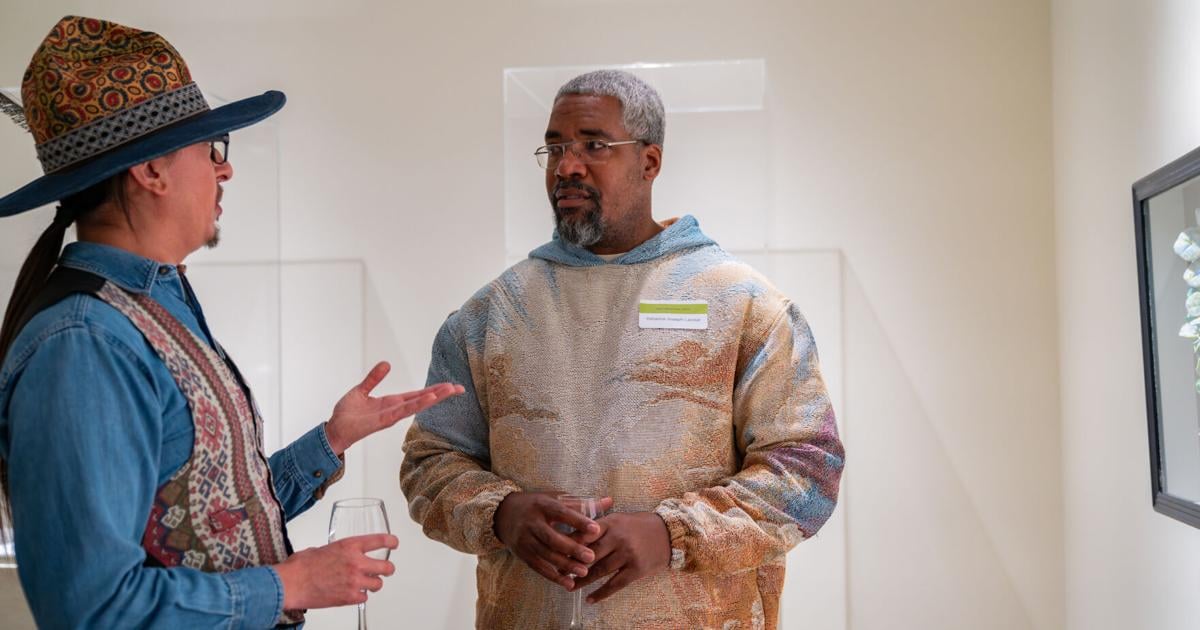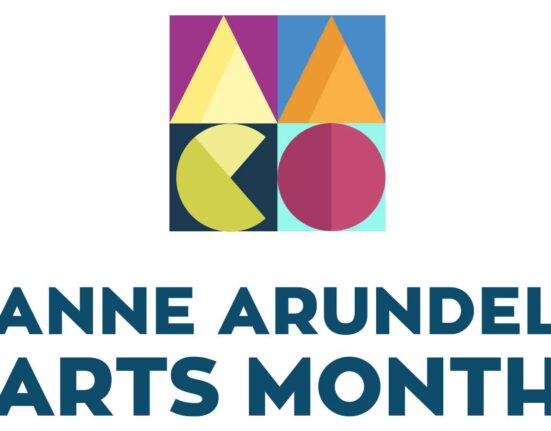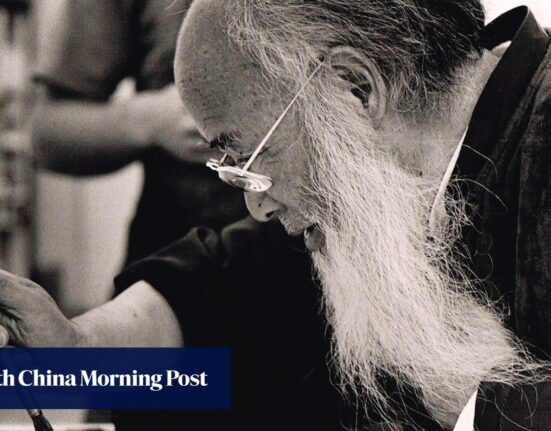A dazzling display of three-dimensional color that takes viewers to another world. A coat made of fortune cookie fortunes. One-of-a-
kind sneakers crafted from leather and lace.
These are just a few of the creative pieces that will be on display through mid-October at the Dubuque Museum of Art’s fourth biannual Craft Invitational.
Curatorial director Stacy Gage Peterson put together a team of artists from the 2022 invitational that assisted in choosing artists for the exhibit.
That team included ceramicist Paul Eshelman, of Elizabeth, Ill.; paper artist Jocelyn Châteauvert, of Mount Vernon, Iowa; wood artist Tom Loeser, of Madison, Wis.; jewelry maker Alicia Velasquez, of Iowa City, Iowa; and glass artist Joe Ivacic, of Chicago.
But far from just choosing artists and their works, the team had to make other decisions as well.
“‘Curate’ can be an overused term,” Peterson said. “This was a team effort that not only picked out the work, but also did a nice job with the layout (of the exhibition gallery). We had to answer a number of questions: ‘Why are we doing this?’ ‘What do we want to say?’ ‘What are the themes?’”
The result is an exhibition highlighting 21 artists of innovation.
“The idea is that these artists are honoring craftsmanship and tradition, but they are pushing it to a different level,” Peterson said. “Either through technical processes or social commentary or just new ways to use the materials.”
For Velasquez, whose roots can be traced to the Apache and Yaqui people, it was important to have indigenous representation.
“My main focus was to invite as many indigenous artists as possible,” she said.
One of those artists is Narciso Meneses Elizalde, of Cedar Rapids, Iowa. A polymer clay artist originally from Hidalgo, Mexico, he traces his familial origins to the Nahua, Hñähñu and Yùhu people of Mexico.
“I have been able to save enough money to do this full time,” he said. “So now that’s what I’m doing. Just trying to do as much as I can.”
Meneses Elizalde works in polymer clay, creating relief-style sculptures composed of vibrant colors, often depicting figures from Flower Worlds, the spiritual domains that dominate the mythology of Mesoamerica.
The bright explosion of colors in Flower Worlds is why the Mexican culture uses those same colors for holiday celebrations. Even Dia de los Muertos, the Day of the Dead, uses bright colors to decorate macabre decorations like skulls.
“There are many cultures that celebrate their individuality,” Meneses Elizalde said. “But when it comes to spiritual practices, we all recognize the Flower Worlds.”
He creates each polymer piece individually before beginning to build each sculpture layer by layer. Meneses Elizalde rarely sketches his ideas.
“For pieces that are really complex, I will,” he said. “But not usually.”
For one of the pieces on display at DuMA, Menesis Elizalde also has created a companion book that helps the viewer “travel” the sculpture through stories.
“As I started this piece, I started to think I couldn’t be too casual about this,” he said. “I have to do it justice because spirituality is one of the main axes around which culture revolves. It’s proof of indigenous resilience.”
Erica Spitzer Rasmussen, of Minneapolis, is an artist who works in paper, creating handmade garments and books that she binds by hand.
The DuMA exhibition is displaying two of her pieces — a pair of shoes inspired by Italian fashion designer Elsa Schiaparelli, one of Rasmussen’s favorite designers, and an Asian-inspired jacket.
“I use paper in my work because it’s environmentally friendly,” she said. “If you work with it properly, there is nothing that’s bad for the environment. And to me, it’s almost akin to the skin. It’s about vulnerability. It can be damaged easily, but it’s forgiving. A lot of my work is in reference to the body, and our body identity.”
Rasmussen, who is also an art professor at Metropolitan State University in St. Paul, Minn., was inspired to create the jacket after reading a Lisa See novel. See, an American novelist of Chinese ancestry, often writes period novels about the experiences of Chinese women in the past.
“I call it ‘Garment of Fortune,’” Rasmussen said. “It’s about recognizing my own good fortune. I had finished reading one of (See’s) books, and I thought, ‘Thank the heavens I live today with all of the comforts and medical advances we have.’”
Using more than 2,000 fortunes, Rasmussen cut each paper in half and then stained the pieces with Chinese teas. She then sewed them together to create the jacket.
The words on the fortunes are still visible, but not until you get up close to the jacket, which then offers up surprising phrases.
“Something like color might call you in from a distance, and then when you get in close you make a discovery,” Rasmussen said. “Maybe you smell it or see something or there’s some sort of visceral experience that kind of sneaks up on you. That’s what I love, and that’s what I strive for.”
Yohance Lacour, of Chicago, took home the Collection Prize at this year’s invitational for his custom sneakers.
Lacour also is an award-winning writer. Along with his colleagues at Chicago’s Invisible Institute, he recently won a Pulitzer Prize and a Peabody Award for “You Didn’t See Nothin,” a 10-episode podcast based on Lacour’s reporting of a 1990s hate crime. The experience ultimately led him into investigative journalism.
“Storytelling was the first love,” Lacour said. “My father taught me how to read and write when I was incredibly young. And that translated into a real love for writing.”
It was during a stint in prison on drug charges that Lacour discovered a new love — working with leather.
“I got into hobby crafts and began working on leather goods,” he said. “The program was never really designed for us to be trained or for us to transition into society with a skill. It was just something to escape the madness.”
After his release, Lacour began working at the Invisible Institute, and he took a class at the Chicago School of Shoemaking and Leather Arts to learn how to use an industrial sewing machine. He met with his counselor at the halfway house where he was living.
“He said ‘You haven’t done anything with your time. I know you really like your leather craft, but what are you going to do with leather?’” Lacour said. “I’m like ‘You’re sitting in a leather chair wearing a leather jacket and leather shoes. You tell me.’”
After that initial class, Lacour began volunteering at the school in exchange for credits to apply toward classes. When the school began offering a class making sneakers from a kit, school founder and CEO Sara McIntosh proposed that Lacour teach the class. But she had one request.
“She said, ‘You’ve got to make history before you can teach it,’” Lacour said. “She had me take the kit and make the shoes, and I still have those shoes.”
Lacour now creates his sneaker art for customers who desire a custom shoe, and he also designs for the mass market, partnering with a leather shoe maker in Portugal.
“I have a growing audience of people who love the look of the shoes,” he said. “I found a manufacturer that I really trust and work well with.”
Lacour is also incorporating his storytelling skills into his brand, using social, civil and environmental activists as brand ambassadors.
“These are people who are tackling huge issues David-and-Goliath style,” he said. “These are the kind of people I want to build content around.”
Glass artist Joe Ivacic hopes that exhibitions like these will open people’s eyes to the viability and necessity of art in all of its many forms.
“In Italy, glassblowing is a blue-collar job,” he said. “In the United States, it’s a fine art form. If you’re using your hands instead of your mind, we should be OK with that. We should be saying ‘Go make a decent living whether it’s as an electrician, a plumber, a mechanic or an artist.’”







